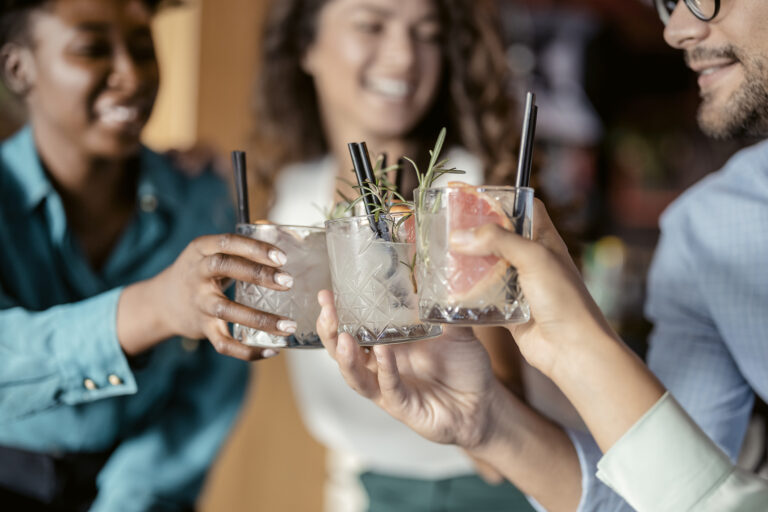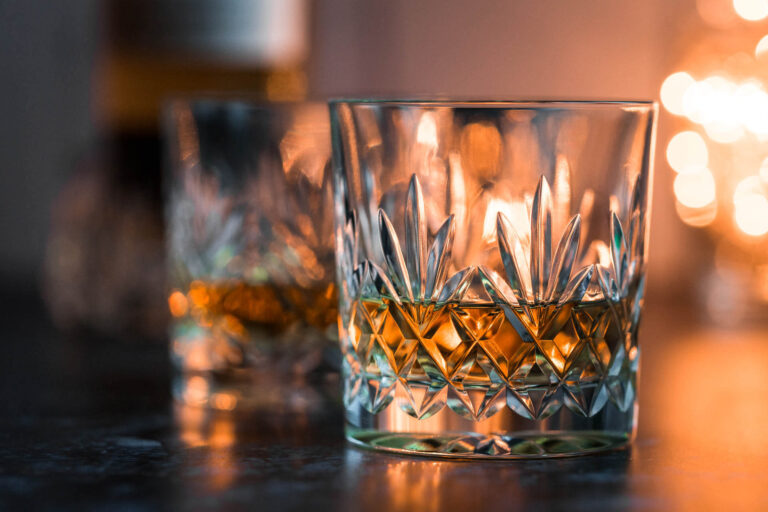This website uses cookies so that we can provide you with the best user experience possible. Cookie information is stored in your browser and performs functions such as recognising you when you return to our website and helping our team to understand which sections of the website you find most interesting and useful.
13/02/2025
Five Key Trends Shifting the Beverage Alcohol Market in 2025
As economic uncertainty persists into 2025, a number of growth opportunities are manifesting themselves for beverage alcohol. Emerging economies offer a buoyant counterpoint to more subdued mature markets, and nascent growth in the on-trade sounds a note of optimism for the year ahead.
The global drinks industry is facing a “subdued but opportunity-rich” trading environment in 2025, with five key trends set to shape the year ahead, according to the latest research from IWSR, the global authority on beverage alcohol data and intelligence.
After persistent inflation, geopolitical tensions and varying levels of consumer confidence characterised 2024, the next 12 months will be marked by continued economic uncertainty, but also a number of promising growth opportunities.
In mature markets such as the US and Europe, stubbornly high inflation rates continue to pressurise consumer purchasing power – but emerging economies appear more buoyant.
India, South Africa and several countries in Southeast Asia and Latin America are benefitting from the positive impact of younger consumers, expanding middle classes and increased urbanisation – with a growing preference for premium and innovative products, alongside a greater willingness to explore new drinking occasions and categories.
“The drinks industry faces a subdued but opportunity-rich environment in 2025,” says Emily Neill, Chief Operating Officer Research and Operations. “Channel shifts offer a note of optimism, with the on-premise showing nascent growth in some key markets, and digital platforms wielding a growing influence on both online and offline purchasing decisions.
“As these key trends shape the beverage alcohol landscape in 2025, they start to frame some key growth segments and markets for the industry. Navigating these will require growth opportunities to be assessed on a market, category and price-tier basis, with a more nuanced approach than was previously needed.”
IWSR has identified five key trends shaping the opportunities for beverage alcohol in 2025:
1: New moderation strategies
“Drinkers are now more habitual in their control of alcohol intake,” says Susie Goldspink, Senior Insights Manager – RTDs and No/Low Alcohol. “This trend spans all age groups, regions and demographics, highlighting moderation as a mainstream cultural phenomenon, rather than a trend limited to younger LDA+ consumers.”
Moderation strategies implemented by consumers include:
- Lighter consumption: There has been a significant increase in the proportion of ‘light’ drinkers – those with low consumption frequency and/or intensity. This group is now the largest segment across the 15 key markets covered by IWSR’s Bevtrac consumer research, surpassing ‘medium’ and ‘heavy’ drinkers.
- Temporary abstinence: This trend is gaining momentum, especially among younger LDA+ consumers. In India, 72% of more affluent drinkers in 10 major cities reported abstaining for a period. In South Africa, Mexico and Brazil, over half of consumers report similar behaviour.
- Single-category occasions: Consumers are increasingly opting to limit themselves to a single type of beverage on any given occasion, often reducing the amount they drink as well. Across the 15 Bevtrac markets, the average number of beverage categories consumed per occasion was 1.8 in 2024 – compared to 2.4 in 2023.
Across the 10 key markets covered by IWSR’s No/Low-Alcohol Strategic Study, no/low volumes are forecast to expand at a CAGR of +4% between 2024 and 2028, with no-alcohol spearheading this with a +7% volume CAGR. The no-alcohol category alone is expected to deliver incremental growth of US$4bn+ by 2028.
“As the moderation trend goes mainstream, no- and low-alcohol categories are expanding rapidly, reshaping beverage alcohol consumption patterns,” explains Goldspink.
2: Growth axis shift intensifies
Developing beverage alcohol markets, rather than mature destinations, are set to be the major growth engines in value terms over the next five years.
Gains will be largely driven by high-population countries – India, China and the US – followed by the likes of Brazil, Mexico, South Africa, Vietnam and Nigeria. However, Emily Neill cautions: “Gains from mature markets will prove more elusive – the US being a notable exception – with many seeing marginal growth or even contracting.”
The strong momentum displayed by developing markets is being driven by younger populations, rising disposable incomes and expanding middle classes. Examples include:
- In India, TBA volumes rose +4% in the first half of 2024, buoyed by strong demand for premium-plus spirits, RTDs and Indian single malts
- In Southeast Asia, markets including Vietnam and the Philippines recorded strong growth in premium beer and spirits
- In Africa, South Africa’s beer, cider and RTD categories saw robust volume gains in the first half of 2024
- In Latin America, a surge in RTD and premium beer consumption in Mexico and Brazil was driven by evolving social norms and younger LDA+ consumers
“While the Indian beverage alcohol market is less developed than those of mature nations, the regulatory landscape is becoming less bureaucratic in certain key states, with state governments taking a more pragmatic view on an industry that is often a significant contributor to tax revenues,” IWSR’s India expert Jason Holway points out. “Combine population growth with less regulation, and the result is significant value growth.”
3: The rise of casual consumption
“The shift from formal, high-profile drinking occasions to more casual and spontaneous settings is transforming the beverage alcohol landscape – especially for categories such as rosé wine, Prosecco, bitters and spirit aperitifs,” says Richard Halstead, Chief Operating Officer Consumer Insights and Custom Analytics. “Changing social norms, economic constraints and a preference for relaxed, versatile beverages are driving this shift.”
- In the US, Prosecco and RTDs are proving popular at brunches, barbecues and informal gatherings, replacing more expensive options such as Champagne
- In Italy, the aperitivo culture and relaxed after-work socialising are fuelling the growth of Prosecco, bitters and aperitifs
- In China, affordable options and casual drinking have gained momentum on the back of a structural change in the on-premise, alongside consumer downtrading as the economy continues to struggle
RTDs in particular are continuing to thrive as a result of the casual consumption trend, and are expected to continue to gain TBA share, especially in the more established RTD markets of Japan, the US, Australia and Canada.
All of the top 10 RTD markets are forecast to register CAGR volume gains between 2023 and 2028, led by Brazil (+6%), Australia (+4%), Germany (+4%), the US (+3%) and Canada (+3%).
4: Premiumisation slowing, but beer stands out
The price competitiveness of premium-plus beer and cider is proving to be a boon in the current macroeconomic landscape, with volumes rising by +2% in the first half of 2024 – versus -3% declines for premium-plus spirits and wine.
“Growth of premium-plus beer is largely being driven by the affordability trend, as consumer occasions evolve and drinkers seek cheaper alternatives to spirits or other drinks categories,” explains Roisin Vulcheva, Senior Insights Manager Beer. “Consumers still get a sense of premiumisation while spending less out-of-pocket for a premium beer versus a premium wine or spirit.”
All key markets report downtrading in both volume and value terms among lower-income consumers, while higher-income drinkers are more likely to reduce volume without trading down in value terms.
At the top of the market, status spirits – those with an average RSP of US$100-plus – are continuing to expand their share of overall global spirits value, reaching 5% of the total market. The consumers of these luxury products tend to be more financially insulated, fuelling continued, although slower, growth.
5: Channel shifts impacting purchasing decisions
IWSR consumer data covering the second half of 2024 shows a year-on-year rise in on-trade consumption on the most recent drinking occasion in some markets. Consumers are continuing to drink more when they go out, although moderation is evident in both the on- and off-trade.
This propensity to go out is particularly strong among Millennials in the US. As their personal circumstances start to improve, Scotch whisky, liqueurs and sparkling wine are among the biggest beneficiaries.
“After years of disruption, the on-trade channel is showing signs of revival in key countries such as China, Germany, Italy, Mexico, the UK and the US, driving a long-awaited note of optimism for the global beverage alcohol market,” says Richard Halstead.
Meanwhile, digital platforms are now playing a pivotal role in driving offline sales, with more consumers turning to online research to guide their in-store purchases. According to IWSR research, 63% of online alcohol buyers conduct extensive research before making a purchase – a trend increasingly echoed by offline shoppers.
Price comparison and product discovery rank as the top research drivers, as consumers allow digital sources such as brand websites, product reviews and even delivery apps to influence their choices across all channels.
Read the 2025 key trends ebook to discover more about beverage alcohol trends for the coming year.
The above analysis reflects IWSR data from the 2024 data release. For more in-depth data and current analysis, please get in touch.
CATEGORY: All | MARKET: All | TREND: Convenience, Moderation, Premiumisation |





